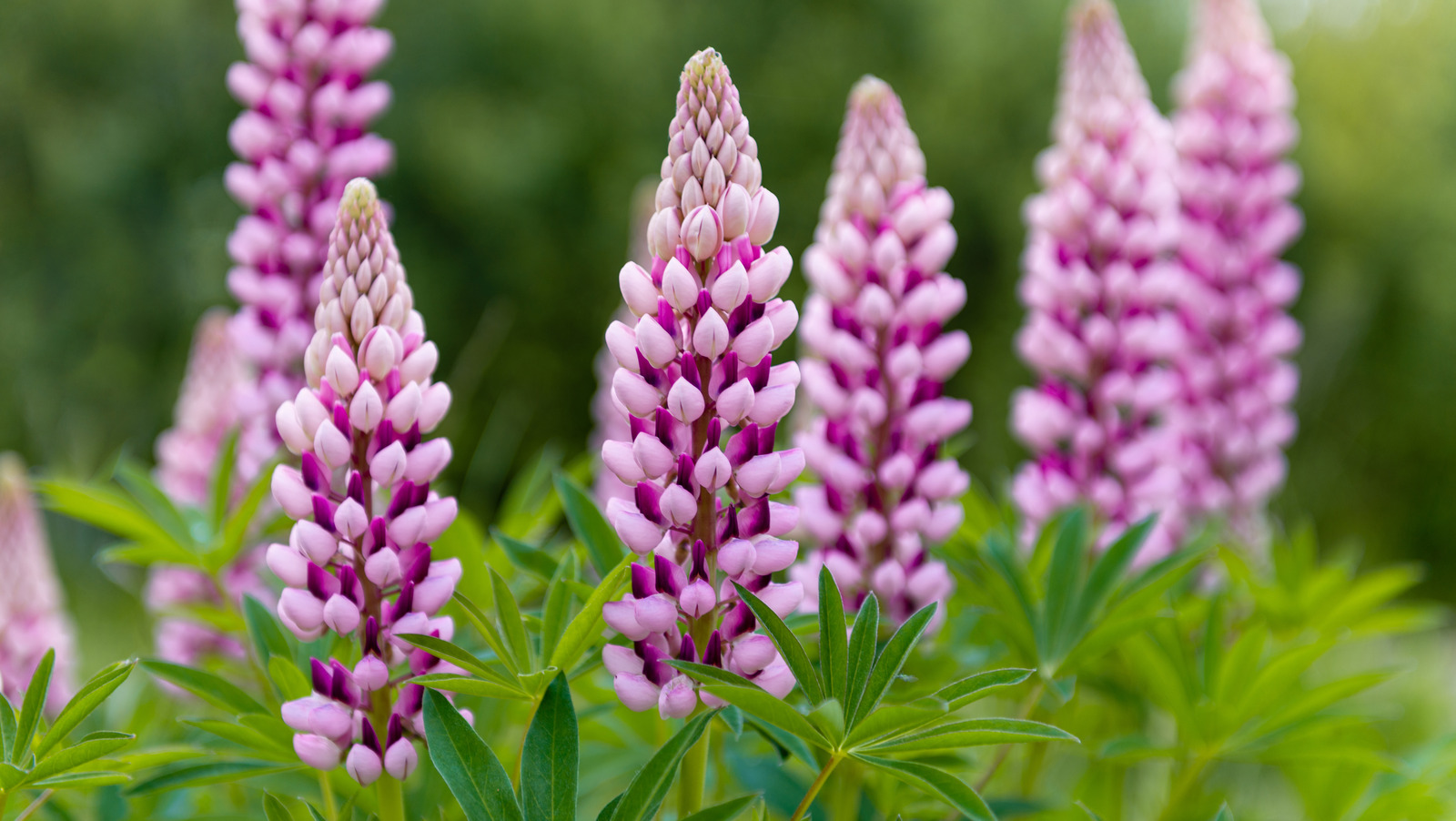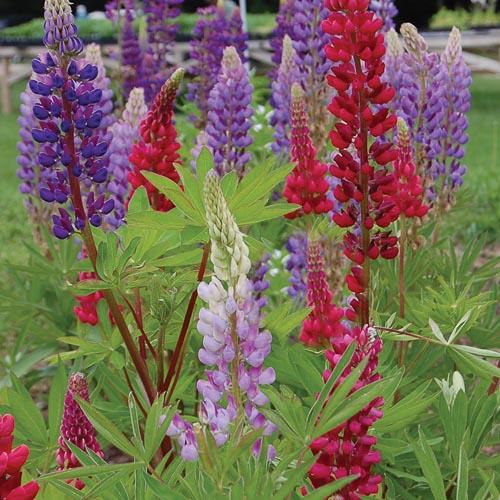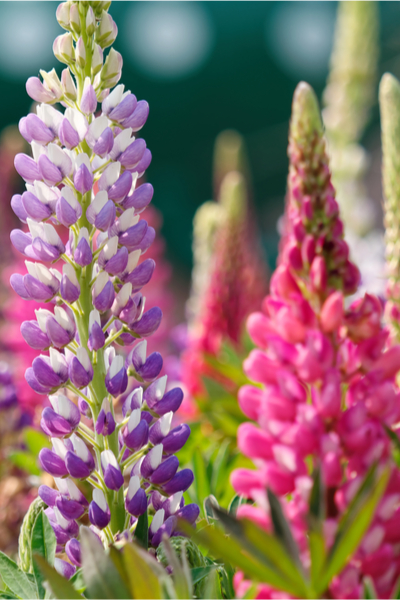Understanding the Unique Needs of Russell Lupines
Russell Lupines are a popular choice among gardeners due to their vibrant, spiky blooms and relatively low-maintenance requirements. However, to ensure success in growing these stunning flowers, it’s essential to understand their specific needs. With proper care and attention, Russell Lupines can thrive in a variety of environments, producing an abundance of colorful blooms that attract pollinators and add visual interest to any garden.
One of the key factors in growing Russell Lupines is providing the right conditions for germination and growth. These flowers prefer well-draining soil and full sun to partial shade, making them an excellent choice for gardens with varying levels of sunlight. Additionally, Russell Lupines are relatively drought-tolerant, but consistent moisture levels will promote healthy growth and blooming.
When it comes to soil, Russell Lupines prefer a slightly acidic to neutral pH, ranging from 6.0 to 7.0. This can be achieved by adding organic matter such as compost or well-rotted manure to the soil. By understanding and meeting these specific needs, gardeners can set their Russell Lupines up for success and enjoy a bountiful display of blooms.
For those new to growing Russell Lupines, it’s essential to note that these flowers can be sensitive to extreme temperatures and weather conditions. Providing protection from harsh winds, frost, and intense heat will help ensure the plants remain healthy and thrive. By taking the time to understand the unique needs of Russell Lupines, gardeners can enjoy the many benefits these flowers have to offer, including their stunning blooms and relatively low-maintenance requirements.
Whether you’re a seasoned gardener or just starting out, growing Russell Lupines can be a rewarding experience. With their vibrant blooms and relatively easy care, these flowers are an excellent choice for gardens of all sizes. By following the tips and guidelines outlined in this article, you’ll be well on your way to growing stunning Russell Lupines that will add beauty and interest to your garden for years to come.
Choosing the Right Location and Soil for Optimal Growth
When it comes to growing Russell Lupines, choosing the right location and soil is crucial for optimal growth and blooming. These flowers prefer well-draining soil and full sun to partial shade, making them an excellent choice for gardens with varying levels of sunlight. In terms of specific sunlight requirements, Russell Lupines thrive in areas that receive at least 6 hours of direct sunlight per day.
In addition to sunlight, soil quality is also essential for growing healthy Russell Lupines. These flowers prefer a slightly acidic to neutral soil pH, ranging from 6.0 to 7.0. To achieve this, gardeners can add organic matter such as compost or well-rotted manure to the soil. This will not only help to adjust the pH but also improve the overall structure and fertility of the soil.
When preparing the soil for planting, it’s essential to remove any debris, rocks, or weeds that may compete with the Russell Lupines for water and nutrients. Gardeners can also add a balanced fertilizer to the soil to provide essential nutrients for healthy growth and blooming. By choosing the right location and soil, gardeners can set their Russell Lupines up for success and enjoy a bountiful display of blooms.
For gardeners who want to learn how to grow Russell Lupines, it’s essential to understand that these flowers can be sensitive to extreme temperatures and weather conditions. Providing protection from harsh winds, frost, and intense heat will help ensure the plants remain healthy and thrive. By taking the time to choose the right location and soil, gardeners can enjoy the many benefits of growing Russell Lupines, including their stunning blooms and relatively low-maintenance requirements.
In terms of specific soil requirements, Russell Lupines prefer a mix that is rich in organic matter and has good drainage. Gardeners can create their own potting mix using a combination of peat moss, vermiculite, and perlite. This will provide the necessary nutrients and drainage for healthy growth and blooming. By following these tips and guidelines, gardeners can learn how to grow Russell Lupines and enjoy their beautiful blooms for years to come.
How to Plant Russell Lupine Seeds for Maximum Germination
Planting Russell Lupine seeds requires careful attention to detail to ensure maximum germination and healthy growth. To start, choose a location with well-draining soil and full sun to partial shade. Russell Lupines prefer a slightly acidic to neutral soil pH, ranging from 6.0 to 7.0.
Before planting, prepare the soil by loosening it to a depth of 12-18 inches. Remove any debris, rocks, or weeds that may compete with the Russell Lupines for water and nutrients. If necessary, add organic matter such as compost or well-rotted manure to adjust the soil pH and improve its structure.
To plant the seeds, follow these step-by-step instructions:
Sow the seeds 1/4 inch deep and 1-2 inches apart in the prepared soil. Water the soil gently but thoroughly after planting. Keep the soil consistently moist during the first few weeks after planting to promote germination.
It’s essential to note that Russell Lupine seeds have a hard outer coating that can inhibit germination. To improve germination rates, soak the seeds in water for 24 hours before planting. This will help to soften the coating and encourage the seeds to sprout.
After planting, keep the soil consistently moist but not waterlogged. Russell Lupines prefer moist soil, but excessive water can lead to root rot and other problems. By following these steps and providing the right conditions, gardeners can learn how to grow Russell Lupines from seed and enjoy their beautiful blooms for years to come.
In addition to proper planting techniques, it’s also essential to provide Russell Lupines with the right growing conditions. This includes maintaining consistent moisture levels, providing essential nutrients, and protecting the plants from extreme temperatures and weather conditions. By following these tips and guidelines, gardeners can enjoy the many benefits of growing Russell Lupines, including their stunning blooms and relatively low-maintenance requirements.
Watering and Fertilizing Russell Lupines for Robust Growth
Russell Lupines require consistent moisture levels and essential nutrients to promote healthy growth and blooming. To learn how to grow Russell Lupines, it’s essential to understand their watering and fertilizing needs.
Watering Russell Lupines requires attention to the soil’s moisture levels. These plants prefer moist soil, but excessive water can lead to root rot and other problems. Check the soil regularly, and water only when the top 2-3 inches of soil feel dry to the touch. Avoid getting water on the leaves or crown of the plant to prevent fungal diseases.
In terms of fertilizing, Russell Lupines benefit from regular feeding. Use a balanced, water-soluble fertilizer (20-20-20) and follow the manufacturer’s instructions for application rates. Fertilize the plants once a month during the growing season (spring-fall) to promote healthy growth and blooming.
It’s also essential to provide Russell Lupines with essential micronutrients, such as iron and magnesium. These micronutrients can be applied separately or as part of a balanced fertilizer. Soil testing can help determine the specific nutrient needs of your Russell Lupines.
Organic fertilizers, such as compost or well-rotted manure, can also be used to promote healthy growth and blooming. These fertilizers release nutrients slowly, providing a steady supply of essential nutrients to the plants.
By providing Russell Lupines with consistent moisture levels and essential nutrients, gardeners can promote healthy growth and blooming. This, in turn, will encourage the plants to produce more flowers and maintain their vibrant color and texture.
Remember, learning how to grow Russell Lupines requires attention to detail and a willingness to provide the right growing conditions. By following these tips and guidelines, gardeners can enjoy the many benefits of growing Russell Lupines, including their stunning blooms and relatively low-maintenance requirements.
Supporting Tall Russell Lupine Stems for Maximum Blooms
Russell Lupines are known for their tall, statuesque stems that can grow up to 3 feet in height. However, these tall stems can be prone to damage from wind or rain, which can cause them to break or become misshapen. To prevent this, it’s essential to provide support for the stems, especially when they are in bloom.
There are several ways to support tall Russell Lupine stems, including staking, trellising, and caging. Staking involves placing a stake near the base of the plant and tying the stem to it using twine or a soft material. This provides support for the stem and helps to keep it upright.
Trellising is another option for supporting Russell Lupine stems. This involves placing a trellis near the plant and training the stem to grow up the trellis. This provides support for the stem and helps to keep it upright, while also adding a decorative element to the garden.
Caging is a third option for supporting Russell Lupine stems. This involves placing a cage around the plant and training the stem to grow up the cage. This provides support for the stem and helps to keep it upright, while also protecting the plant from wind and rain.
Regardless of the method used, it’s essential to provide support for tall Russell Lupine stems to prevent damage and promote maximum blooming. By providing support, gardeners can help to ensure that their Russell Lupines grow and bloom to their full potential.
When providing support for Russell Lupine stems, it’s also essential to consider the type of material used. Soft materials, such as twine or cloth, are best for tying the stem to the stake or trellis, as they will not damage the stem. Avoid using hard materials, such as wire or metal, as they can damage the stem and cause it to become misshapen.
By providing support for tall Russell Lupine stems, gardeners can help to promote maximum blooming and prevent damage from wind or rain. This is an essential step in learning how to grow Russell Lupines and enjoying their beautiful blooms.
Pest and Disease Management for Healthy Russell Lupines
Russell Lupines are generally a hardy and disease-resistant plant, but they can still be susceptible to certain pests and diseases. To learn how to grow Russell Lupines, it’s essential to understand how to manage these potential issues.
Common pests that can affect Russell Lupines include aphids, slugs, and snails. Aphids can be controlled using neem oil or insecticidal soap, while slugs and snails can be deterred using copper tape or crushed eggshells around the base of the plants.
Powdery mildew is a common disease that can affect Russell Lupines, particularly in humid or wet conditions. This can be prevented by ensuring good air circulation around the plants and avoiding overhead watering. If powdery mildew does occur, it can be treated using a fungicide specifically designed for powdery mildew.
Other diseases that can affect Russell Lupines include root rot and leaf spot. Root rot can be caused by overwatering, so it’s essential to ensure that the soil is well-draining and not waterlogged. Leaf spot can be caused by fungal or bacterial infections, and can be treated using a fungicide or bactericide.
Organic and integrated pest management strategies are essential for maintaining healthy Russell Lupines. This includes using physical barriers, such as fine mesh or fine netting, to prevent pests from reaching the plants. It also includes using biological controls, such as introducing beneficial insects or microorganisms, to control pest populations.
By understanding how to manage pests and diseases, gardeners can help to ensure that their Russell Lupines remain healthy and thrive. This is an essential step in learning how to grow Russell Lupines and enjoying their beautiful blooms.
Regular monitoring and maintenance are also crucial for preventing pest and disease issues. Regularly inspect the plants for signs of pests or diseases, and take action promptly if any issues are detected. This can help to prevent the spread of disease and reduce the risk of pest infestations.
Deadheading and Pruning Russell Lupines for Extended Blooming
Deadheading and pruning are essential techniques for maintaining the health and appearance of Russell Lupines. Deadheading involves removing spent blooms to encourage more flowering and prevent seed production. Pruning involves cutting back the stems to maintain shape, promote new growth, and encourage repeat blooming.
To deadhead Russell Lupines, simply remove the spent blooms by cutting off the stem just above a leaf node. This will encourage the plant to produce more flowers and prevent seed production. It’s essential to deadhead regularly to maintain the appearance of the plant and encourage continuous blooming.
Pruning Russell Lupines involves cutting back the stems to maintain shape and promote new growth. Cut back the stems to about one-third to one-half of their height after blooming. This will encourage the plant to produce new growth and repeat blooming. Prune the stems at a 45-degree angle, just above a leaf node, to promote healthy growth and prevent water from collecting on the cut end.
Pruning Russell Lupines also helps to maintain their shape and appearance. Cut back any leggy stems or stems that are growing outside of the plant’s natural shape. This will help to maintain the plant’s appearance and encourage bushy growth.
By deadheading and pruning Russell Lupines, gardeners can encourage extended blooming and maintain the health and appearance of the plant. This is an essential step in learning how to grow Russell Lupines and enjoying their beautiful blooms.
It’s also essential to note that Russell Lupines are perennials, and they will come back year after year if properly cared for. By deadheading and pruning, gardeners can encourage the plant to come back stronger and healthier each year, with more blooms and a fuller appearance.
Regular maintenance, including deadheading and pruning, is essential for maintaining the health and appearance of Russell Lupines. By following these tips and guidelines, gardeners can enjoy the beautiful blooms of Russell Lupines for years to come.
Overwintering Russell Lupines for Year-Round Interest
Russell Lupines are perennials, and they require special care to overwinter successfully. To learn how to grow Russell Lupines, it’s essential to understand how to overwinter them to maintain year-round interest in the garden.
Mulching is an effective way to protect Russell Lupines from extreme temperatures and moisture loss during the winter months. Apply a 2-3 inch layer of organic mulch, such as straw or bark chips, around the base of the plants. This will help to insulate the soil and protect the roots from freezing temperatures.
Protecting Russell Lupines from extreme temperatures is also crucial for overwintering success. In areas with harsh winters, consider providing additional protection, such as a cold frame or a frost blanket, to shield the plants from wind and frost.
In the spring, divide or transplant Russell Lupines to maintain their health and vigor. This will help to prevent the plants from becoming too crowded and will encourage new growth and blooming.
Overwintering Russell Lupines requires careful planning and attention to detail. By following these tips and guidelines, gardeners can maintain year-round interest in the garden and enjoy the beautiful blooms of Russell Lupines for years to come.
It’s also essential to note that Russell Lupines are sensitive to extreme temperatures and moisture levels. Avoid exposing the plants to standing water or waterlogged soil, as this can lead to root rot and other problems.
By providing proper care and protection during the winter months, gardeners can help to ensure the health and vigor of their Russell Lupines. This will enable the plants to come back strong and healthy in the spring, with more blooms and a fuller appearance.
Regular maintenance, including mulching, protecting from extreme temperatures, and dividing or transplanting in the spring, is essential for maintaining the health and appearance of Russell Lupines. By following these tips and guidelines, gardeners can enjoy the beautiful blooms of Russell Lupines for years to come.



:max_bytes(150000):strip_icc()/growing-lupine-flowers-1316034-11-4966d1a9859647b7abe04586df91c012.jpg)


